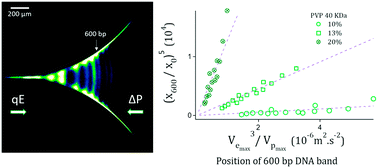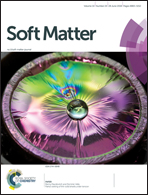Modeling of DNA transport in viscoelastic electro-hydrodynamic flows for enhanced size separation†
Abstract
DNA separation and analysis have advanced over recent years, benefiting from microfluidic systems that reduce sample volumes and analysis costs, essential for sequencing and disease identification in body fluids. We recently developed the μLAS technology that enables the separation, concentration, and analysis of nucleic acids with high sensitivity. The technology combines a hydrodynamic flow actuation and an opposite electrophoretic force in viscoelastic polymer solutions. Combining hydrodynamics first principles and statistical mechanics, we provide, in this paper, a quantitative model of DNA transport capable of predicting device performance with the exclusive use of one adjustable parameter associated with the amplitude of transverse viscoelastic forces. The model proves to be in remarkable agreement with DNA separation experiments, and allows us to define optimal conditions that result in a maximal resolution length of 7 bp. We finally discuss the usefulness of our model for separation technologies involving viscoelastic liquids.



 Please wait while we load your content...
Please wait while we load your content...